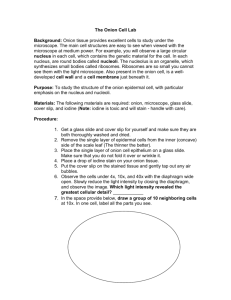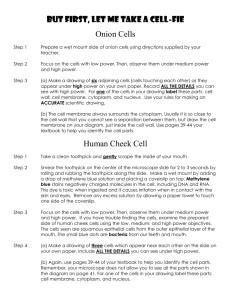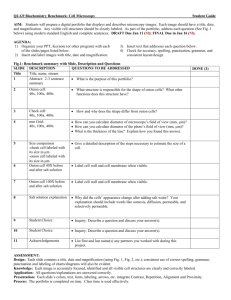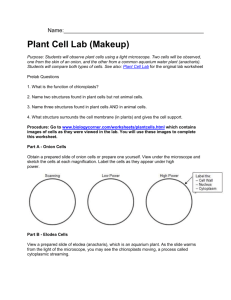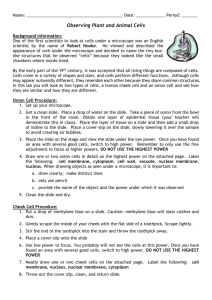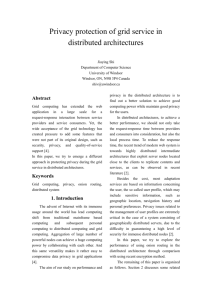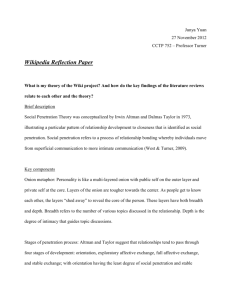Activity: Observing Onion Cells
advertisement
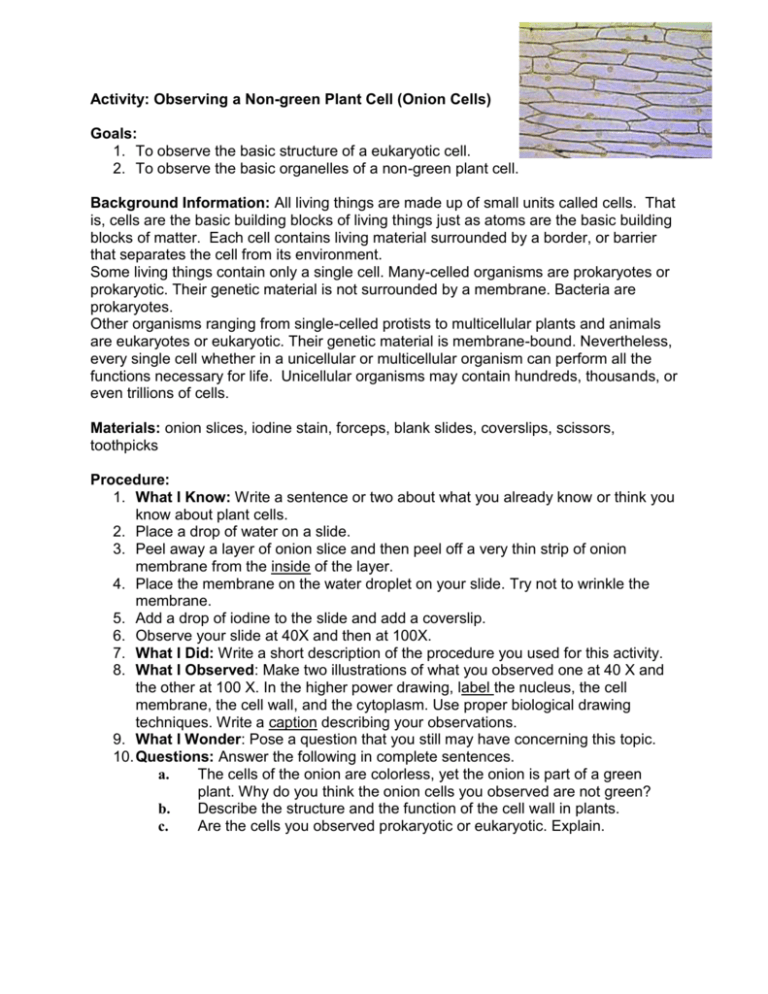
Activity: Observing a Non-green Plant Cell (Onion Cells) Goals: 1. To observe the basic structure of a eukaryotic cell. 2. To observe the basic organelles of a non-green plant cell. Background Information: All living things are made up of small units called cells. That is, cells are the basic building blocks of living things just as atoms are the basic building blocks of matter. Each cell contains living material surrounded by a border, or barrier that separates the cell from its environment. Some living things contain only a single cell. Many-celled organisms are prokaryotes or prokaryotic. Their genetic material is not surrounded by a membrane. Bacteria are prokaryotes. Other organisms ranging from single-celled protists to multicellular plants and animals are eukaryotes or eukaryotic. Their genetic material is membrane-bound. Nevertheless, every single cell whether in a unicellular or multicellular organism can perform all the functions necessary for life. Unicellular organisms may contain hundreds, thousands, or even trillions of cells. Materials: onion slices, iodine stain, forceps, blank slides, coverslips, scissors, toothpicks Procedure: 1. What I Know: Write a sentence or two about what you already know or think you know about plant cells. 2. Place a drop of water on a slide. 3. Peel away a layer of onion slice and then peel off a very thin strip of onion membrane from the inside of the layer. 4. Place the membrane on the water droplet on your slide. Try not to wrinkle the membrane. 5. Add a drop of iodine to the slide and add a coverslip. 6. Observe your slide at 40X and then at 100X. 7. What I Did: Write a short description of the procedure you used for this activity. 8. What I Observed: Make two illustrations of what you observed one at 40 X and the other at 100 X. In the higher power drawing, label the nucleus, the cell membrane, the cell wall, and the cytoplasm. Use proper biological drawing techniques. Write a caption describing your observations. 9. What I Wonder: Pose a question that you still may have concerning this topic. 10. Questions: Answer the following in complete sentences. a. The cells of the onion are colorless, yet the onion is part of a green plant. Why do you think the onion cells you observed are not green? b. Describe the structure and the function of the cell wall in plants. c. Are the cells you observed prokaryotic or eukaryotic. Explain. Name: ________________________________________ Title: Observing Non-green Plant Cells (Onion Cells) Date _________ 1. What I Know: 2. What I Did: 3. What I Observed: 40X Onion Cells Caption: 4. What I Learned: 5. What I Wonder: 6. Questions: 100X Onion Cells



